Home Blogs Technical OWASP Tools for Website Security: A Complete Guide
Posted By: Shriji Solutions
07 June, 2025

In the digital age, securing your website is no longer optional – it's a necessity. Cyber threats are evolving rapidly, and websites are increasingly targeted by attackers looking to exploit vulnerabilities. Fortunately, the Open Worldwide Application Security Project (OWASP) provides an array of tools and resources to help developers, system administrators, and businesses identify, understand, and mitigate security risks. In this blog, we'll explore some of the most effective OWASP tools available for website security.
What is OWASP?
OWASP (Open Worldwide Application Security Project) is a nonprofit foundation that works to improve the security of software. It provides free and open resources, including tools, documentation, and community-led projects, to help developers build secure web applications. OWASP is best known for its "Top 10" list, which outlines the most critical security risks to web applications.
Why Use OWASP Tools?
OWASP tools are widely respected and used in the cybersecurity community because they are:
- Open Source: Freely available to use and modify.
- Community-Driven: Built and maintained by security experts.
- Regularly Updated: Reflect the current threat landscape.
- Comprehensive: Cover a wide range of testing and protection needs.
Using OWASP tools can help you:
- Identify vulnerabilities early in the development cycle.
- Understand how attackers may exploit your site.
- Comply with industry regulations and best practices.
- Build user trust by ensuring secure experiences.
Top OWASP Tools for Website Security
Let's dive into some of the most widely-used OWASP tools that can significantly boost your website's security posture.
1. OWASP ZAP (Zed Attack Proxy)
OWASP ZAP is one of the most popular free security tools for finding vulnerabilities in web applications. It is designed for both beginners and experienced security professionals.
Key Features:
- Intercepting proxy for inspecting and modifying requests and responses.
- Automated scanners and passive scanning.
- Fuzzer to test how your application handles unexpected or invalid inputs.
- REST API for integration with CI/CD pipelines.
Use Case: Ideal for penetration testing, especially for developers who want to integrate security testing into their DevOps cycle.
2. OWASP Dependency-Check
Modern web applications often rely on third-party libraries and frameworks. OWASP Dependency-Check is a Software Composition Analysis (SCA) tool that identifies project dependencies and checks if there are any known vulnerabilities.
Key Features:
- Scans Java, .NET, JavaScript (Node.js), Python, PHP, Ruby, and more.
- Integrates with build tools like Maven, Gradle, and Jenkins.
- Reports vulnerabilities with CVE identifiers.
Use Case: Ideal for securing open-source components in your project.
3. OWASP Amass
Amass is a powerful tool for network mapping and external asset discovery using open-source information gathering and active reconnaissance techniques.
Key Features:
- DNS enumeration.
- Network infrastructure mapping.
- Subdomain discovery and tracking.
- Integration with other tools and APIs.
Use Case: Great for ethical hacking and bug bounty hunters to map out potential attack surfaces.
4. OWASP DefectDojo
DefectDojo is a security orchestration and vulnerability management tool designed to streamline security testing and reporting.
Key Features:
- Centralized vulnerability management.
- Integration with other scanning tools.
- Metrics, tracking, and trending data.
- Customizable workflows.
Use Case: Best for large teams managing multiple tests and tools across various projects.
5. OWASP Web Security Testing Guide (WSTG)
While not a tool in the traditional sense, the WSTG is an essential resource for anyone conducting manual security assessments. It provides a comprehensive set of test cases for assessing web application security.
Key Features:
- Covers everything from authentication to business logic.
- Regularly updated by a global community.
- Includes test scenarios, checklists, and expected results.
Use Case: A go-to guide for manual security testing and training new security professionals.
6. OWASP CSRFTester
CSRFTester is a tool to test web applications for Cross-Site Request Forgery (CSRF) vulnerabilities. It helps developers identify places in their applications that are susceptible to CSRF attacks.
Key Features:
- Easy-to-use testing environment.
- Simulates CSRF attacks.
- Helps in identifying and fixing vulnerable endpoints.
Use Case: Useful for developers and testers focusing on input validation and session handling.
7. OWASP Secure Headers Project
The Secure Headers Project provides guidelines and tools for implementing proper HTTP security headers.
Key Features:
- Explanation of critical HTTP headers like Content-Security-Policy, X-Frame-Options, and more.
- Online scanning tool to assess your headers.
- Recommendations for enhancing header-based security.
Use Case: Perfect for quick checks and ensuring browser-side protections are in place.
8. OWASP Juice Shop
Juice Shop is an intentionally insecure web application designed for educational purposes. It mimics a real online store with dozens of vulnerabilities built-in.
Key Features:
- Realistic application for learning and testing.
- Challenges that help you understand and exploit vulnerabilities.
- Integration with security training programs.
Use Case: Great for developers and security professionals to practice ethical hacking skills.
9. OWASP AppSensor
AppSensor is a framework that provides real-time application layer intrusion detection and automated response.
Key Features:
- Real-time monitoring of application behavior.
- Detection of malicious activity.
- Custom rules and thresholds for alerts.
Use Case: Valuable for applications requiring continuous security monitoring.
10. OWASP Threat Dragon
Threat Dragon is a modeling tool used to visualize and document threats and security mitigations.
Key Features:
- Browser and desktop versions available.
- Draw threat models using Data Flow Diagrams (DFDs).
- Identify risks and apply recommended mitigations.
Use Case: Useful in the early stages of software design for threat modeling.
How to Integrate OWASP Tools into Your Workflow
To make the most of OWASP tools, they should be integrated throughout the software development lifecycle (SDLC):
- During Development: Use Dependency-Check to secure third-party libraries and Juice Shop for training.
- During Testing: Use ZAP and CSRFTester to find and fix vulnerabilities.
- Before Deployment: Use WSTG to manually assess security and Secure Headers to check header configurations.
- Post Deployment: Use Amass and AppSensor to monitor external and internal threats.
Adopting a DevSecOps approach by integrating security tools into CI/CD pipelines ensures that vulnerabilities are caught early and resolved quickly.
Final Thoughts on OWASP Tools
OWASP tools offer a powerful arsenal for securing websites at every stage of development and maintenance. From automated scanning to real-time intrusion detection and threat modeling, these tools empower developers and security professionals to build and maintain robust, secure web applications.
Incorporating OWASP tools into your security strategy not only protects your users and data but also enhances your reputation and helps you meet compliance requirements. Whether you're running a small website or managing a large enterprise application, OWASP provides the resources needed to stay ahead of cyber threats.
Conclusion
Website security is an ongoing process, not a one-time task. Regularly testing and monitoring your site using OWASP tools can greatly reduce your risk of attacks and data breaches.
If you're unsure where to begin or need expert help in performing a comprehensive website security checkup, Shriji Solutions is here to assist. Our team of professionals can audit your site, implement the right security tools, and ensure you're protected against evolving threats. Reach out today and make your website a fortress against cybercrime!

